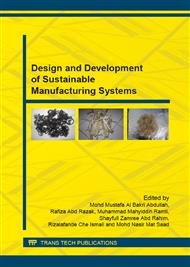[1]
Davidovits, J., Geopolymers and geopolymeric new materials. Journal of Thermal Analysis, 1989. 35(2): pp.429-441.
DOI: 10.1007/bf01904446
Google Scholar
[2]
Heah, C.Y., et al., Kaolin-based geopolymers with various NaOH concentrations. International Journal of Minerals, Metallurgy andMaterials, 2013. 20: pp.313-322.
DOI: 10.1007/s12613-013-0729-0
Google Scholar
[3]
Zhang, Y.S., W. Sun, and Z.J. Li, Hydration process of potassium polysialate (K-PSDS) geopolymer cement. Advances in Cement Research, 2005. 17: pp.23-28.
DOI: 10.1680/adcr.2005.17.1.23
Google Scholar
[4]
Mustafa al-Bakri, A.M., et al., The relationship of NaOH molarity, Na2SiO3/NaOH ratio, fly ash/alkaline activator ratio, and curing temperature to the strength of fly ash-based geopolymer. Advanced in Materials Research, 2011. 328-330: pp.1475-1482.
DOI: 10.4028/www.scientific.net/amr.328-330.1475
Google Scholar
[5]
Wang, S.D., K.L. Scrivener, and P.L. Pratt, Factors affecting the strength of alkali-activated slag. Cement & Concrete Research, 1994. 24: pp.1033-1043.
DOI: 10.1016/0008-8846(94)90026-4
Google Scholar
[6]
Cheng, T.W. and J.P. Chiu, Fire-resistant geopolymer produced by granulated blast furnace slag. Minerals Engineering, 2003. 16: pp.205-210.
DOI: 10.1016/s0892-6875(03)00008-6
Google Scholar
[7]
Aleem, M.I.A. and P.D. Arumairaj, Geopolymer concrete- a review. Eng Sc & Tech, 2012. 1: pp.118-122.
Google Scholar
[8]
Davidovits, J., Mineral polymers and methods of making them. 1982: United States.
Google Scholar
[9]
Bakharev, T., Geopolymeric materials prepared using Class F f ly ash and elevated temperature curing. Cement and Concrete Research, 2005. 35: p.1224– 1232.
DOI: 10.1016/j.cemconres.2004.06.031
Google Scholar
[10]
Komnitsas, K. and D. Zaharaki, Geopolymerisation: A review and prospects for the minerals industry. Minerals Engineering, 2007. 20: pp.1261-1277.
DOI: 10.1016/j.mineng.2007.07.011
Google Scholar
[11]
Fernandez-Jimenez, A. and A. Palomo, Factor affecting early compressive strength of alkali activated fly ash (OPC-free) concrete. Materiales de Construccion, 2007. 57: pp.7-22.
DOI: 10.3989/mc.2007.v57.i287.53
Google Scholar
[12]
Heah, C.Y., et al., Effect of curing profile on kaolin-based geopolymers. Physics Procedia, 2011. 22: pp.305-311.
DOI: 10.1016/j.phpro.2011.11.048
Google Scholar


